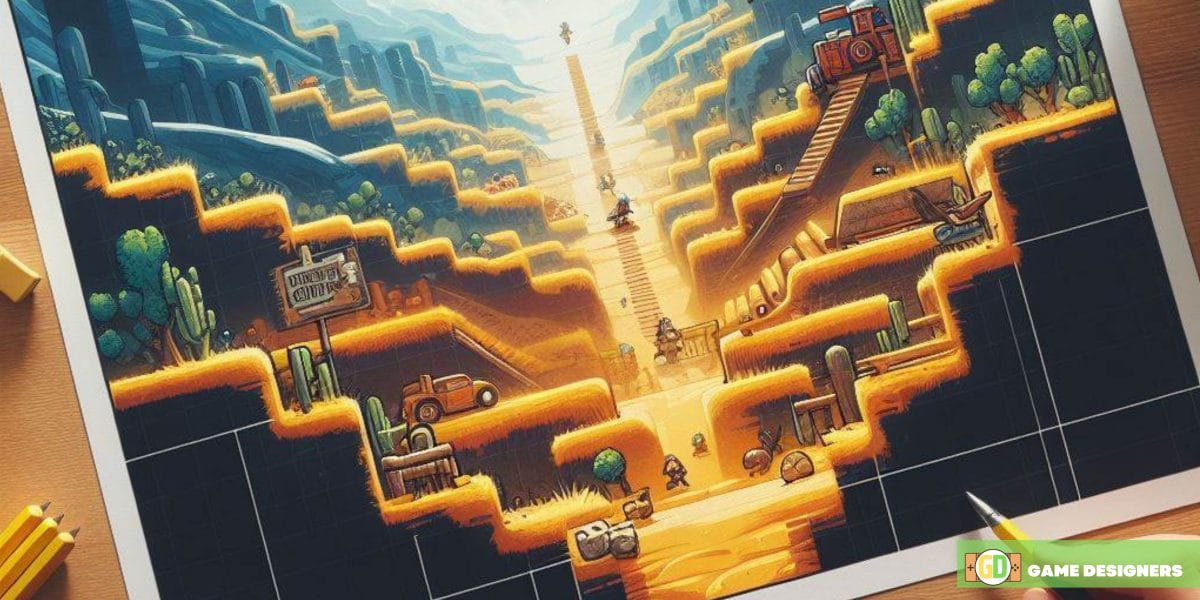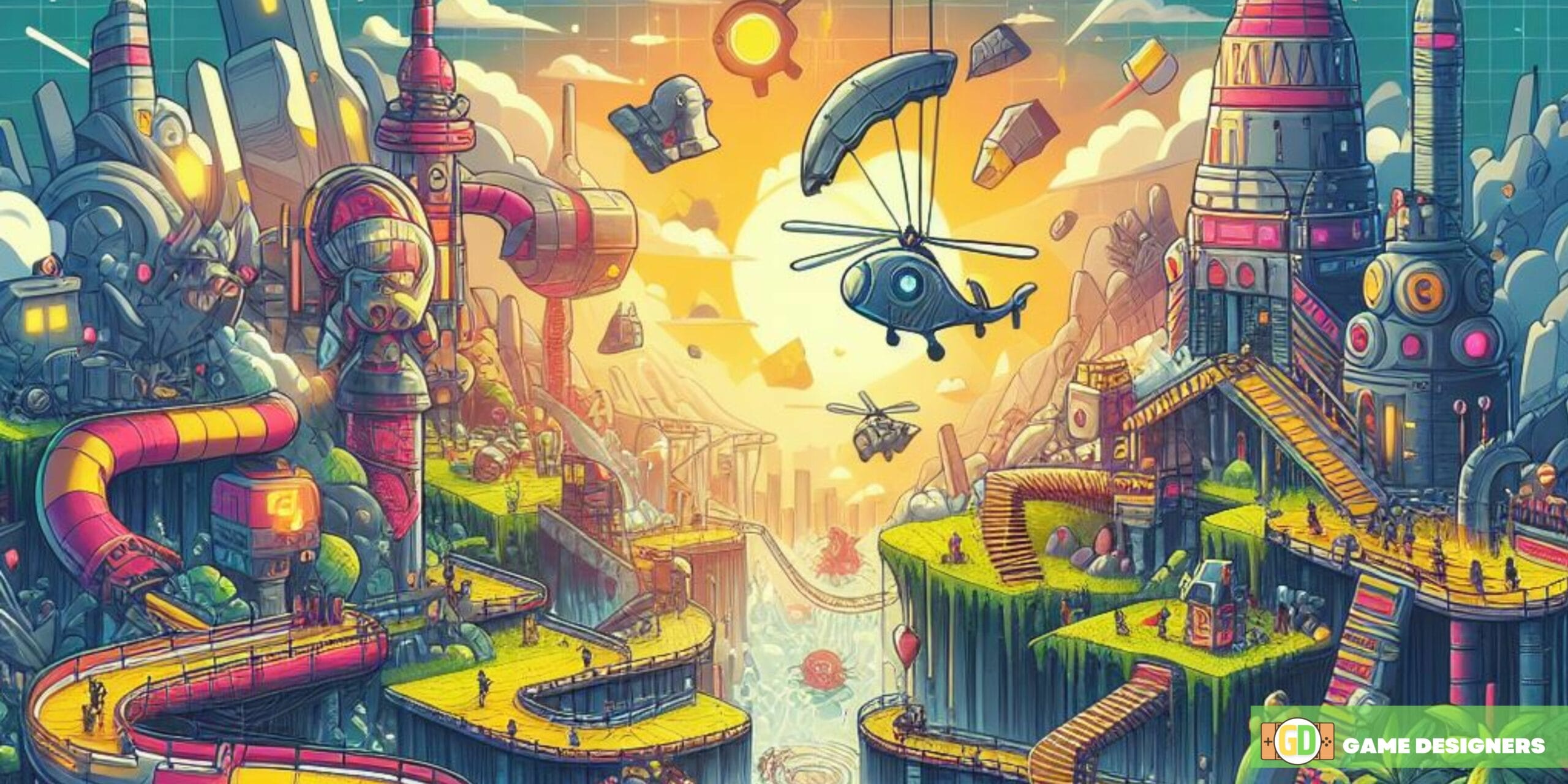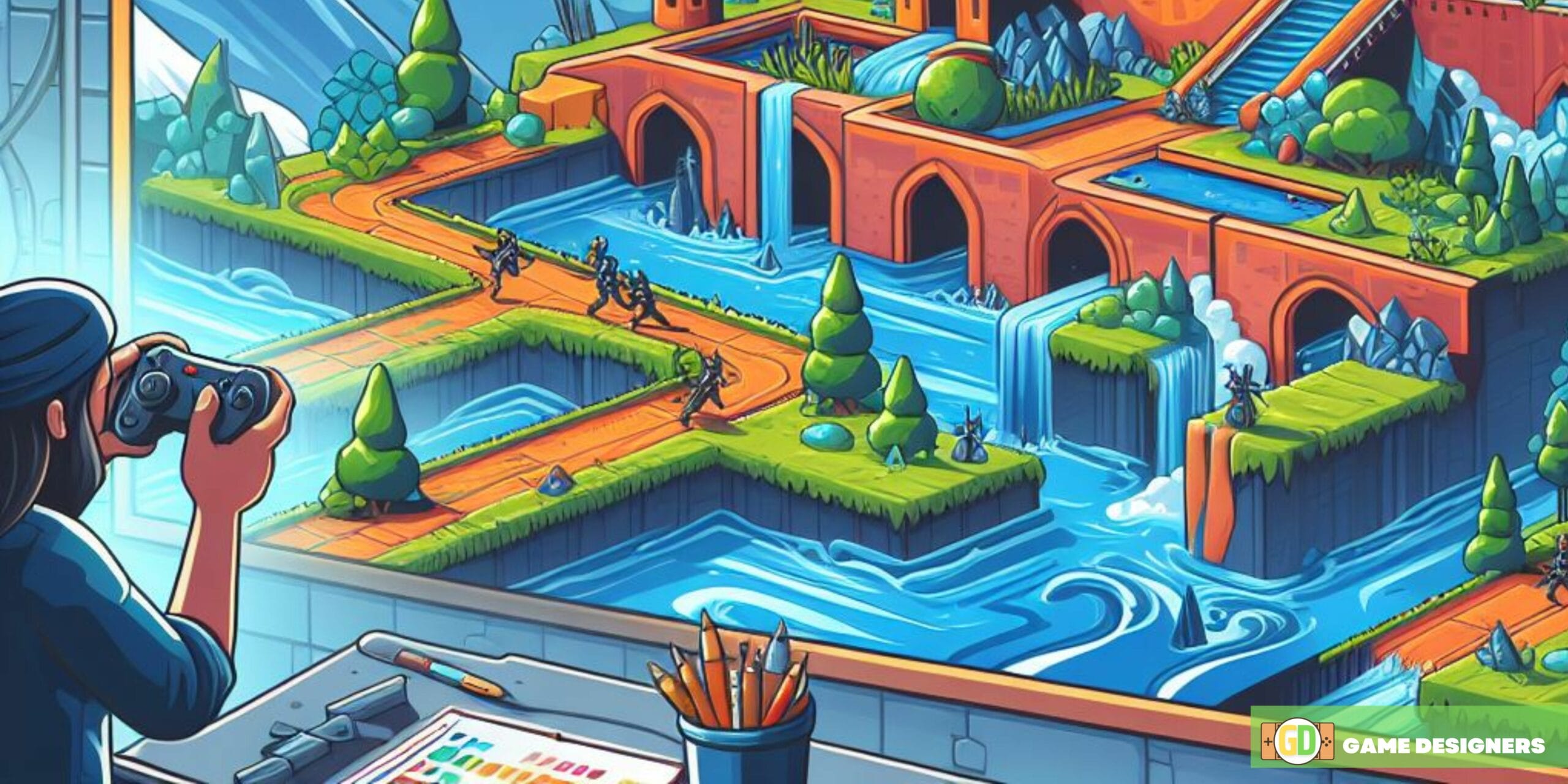Designing engaging game environments goes beyond aesthetic appeal—it’s about crafting meaningful player experiences. A well-designed game level guides emotions, facilitates exploration, and reinforces narrative and mechanics in subtle, intentional ways.
This article explores essential techniques in game level design, from user-centered research and spatial planning to dynamic interactivity and performance optimization, giving designers the tools to create immersive, replayable spaces.
Introduction Game Environment Design Techniques

Section 1: Understanding Player Engagement
Player-Centric Design
Adopting a player-centric design approach is key to creating captivating game levels that keep users hooked. This involves gaining a comprehensive understanding of player preferences, expectations, and behaviors through user experience analysis to shape design decisions. Game environments should create an emotional connection, evoking excitement, curiosity, fear or laughter to foster engagement.
Storytelling Through Environment
Game levels can integrate narrative elements into their design to boost player immersion. Narrative integration uses environmental storytelling cues to reveal backstories and reinforce plotlines organically, rather than through exposition. Maintaining thematic consistency also strengthens the game’s identity. For example, a dystopian sci-fi game could incorporate dark palettes, neon lights and advanced technologies throughout its levels.
More subtle narrative elements can also be embedded for players to discover themselves. Hidden audio logs, symbolic statues or notes create mysteries for engaged users to piece together. However, these subtle clues should act as complements to the core narrative path, guiding players smoothly through the level.
Player Psychology and Behavior
Analyzing player psychology provides valuable insights into user motivations and likely behaviors. This allows designers to craft environments accommodating different playstyles, guiding players towards meaningful interactions. Reward systems are a straightforward way to reinforce intended paths, providing satisfying audiovisual feedback upon milestone completions.
However, players will often deviate from expected routes. Accurately tuning challenge and skill balances ensures users feel regularly tested without being overwhelmed. Adaptive difficult or multiple routes can allow players of differing abilities to feel equally engaged.
Creating Immersive Environments
Sensory engagement through visual, auditory and interactive feedback is central to immersive level design. Richly detailed worlds with responsive sound effects and physics systems allow players to become deeply embedded within game environments. Open levels encourage exploration, hiding optional challenges, lore collectibles or surprising events.
Dynamic environments sustain intrigue by introducing variety over time. Destructible set pieces, movable objects, and revamped obstacle configurations provoke players to reconsider navigation strategies. These elements deepen immersion while stretching engagement beyond a single playthrough.

Section 2: Design Principles and Techniques
Top-Down Level Design
Adopting a holistic design approach ensures game levels integrate smoothly within broader productions. Environments should align with overarching themes and world-building contexts established through studios’ creative visions.
Wide lens perspectives also enable designers to consciously shape environmental pacing. Placing enemies, secrets or story beats at calculated intervals accentuates narratives’ tension-release cadences. Player progression remains visible too, allowing milestones like acquiring new mechanics or weapons to culminate at major spatial thresholds.
Spatial Composition and Layout
A level’s spatial configuration directly impacts local gameplay experiences. Environmental affordances like clamberable ledges, wide corridors and visible outlets subtly prompt certain player decisions through level architecture alone.
Spatial dynamics also contribute to aesthetic appeal; curvilinear geometry, shifting elevations and interweaving pathways make richer spaces than monotonous grids. Navigation remains intuitive however, as emphasis on leading lines, landmarks and borders streamline wayfinding.
Interactive Elements and Mechanics
While spatial layout sets stationary play boundaries, interactive elements bring environments to life. Environmental mechanics like buttons, pulleys or dripping chemicals create chain reactions for players to observe. Physics engines empower users to manipulate the world around them through pushing, shooting or dismantling objects.
Integrating puzzles into levels also prompts experimentation. Pattern analysis, spatial reasoning or lateral thinking get tested through manipulating environmental features like diverts paths, redirecting power grids or unlocking doors. These activities urge players to engage with the level, rather than just navigating it.
Enabling creativity and unexpected outcomes embodies the most compelling level interactions however. Sandbox environments excel here through their open-endedness, but defined spaces can still support emergent gameplay via versatile mechanics. Giving players tools to reshape layouts or combine features in unintended ways best facilitates this.
Visual Aesthetics and Theming
A cohesive sense of place binds level designs together across gameplay, narrative and technical elements. Atmospheric design aligns environmental aesthetics with intended tones through color palettes, lighting and effects. Stark, desaturated industrial levels evoke gritty realism given the right visual treatment. Conversely, lush emerald forests thriving with rainbow lens flares capture fantastical wonder.
Thematic coherence also ensures symbols, architecture and decorative patterns reinforce game worlds within levels. Ornately carved columns holding scrolling marquees would suit fantasy RPGs, while sleek monochromatic SuperStructures might support sci-fi shooters. Regardless, aesthetic and thematic consistency immerse players by keeping them believing in designed realities.

Section 3: Iterative Development and Testing
Iterative Design Process
Level design is an inherently continuous process, warranting constant iteration and improvement after initial drafting. Prototyping preliminary layouts enables designers to test pacing, navigation cues and feature viability without heavy rendering investments. These rough models get refined over successive iterations based on playtesting feedback.
Early testing identifies the most glaring issues, while increasingly subtle changes smooth overall experiences. Regular player feedback integration prevents tunnel vision by aligning designs with community desires. However open this process, research insights should hold more weight than individual comments to avoid overcorrection.
Ongoing balancing and tuning in response to usage data also stabilizes engagement. Monitoring player fatigue, completion rates and frequent deaths at particular sections highlights areas needing difficulty recalibration or additional cues. Though exhaustive, maintaining iterative design and assessment realizing excellent levels.
User Testing and Feedback
Establishing robust playtesting protocols ensures designers gather actionable insights into level usability. Formal UX practices like think-aloud observations, heuristic analyses and usability questionnaires help gauge pain points even early prototypes may hold.
Examining accessibility at this phase is also prudent to accommodate disabled players. Testing with mobility aid users uncovers potentially restrictive geometry, while vision impaired playthroughs check descriptive audio cues. Capturing diverse feedback now prevents exclusionary oversights needing significant rework later.
However, iterating based directly on responses risks overcorrecting niche objections. Broad trends should take priority where possible, with outliers noted more selectively. Regular user studies ultimately enhance level designs holistically.
Balancing Challenge and Enjoyment
Players deriving satisfaction from conquering challenges is integral, but frustration remains a thin line. Testers across skill levels help model difficulty progression – less experienced ones reveal elements feeling unintuitively hard, while seasoned players check sufficient headroom exists.
Occasional cathartic wins help weaker players stay motivated as hurdles intensify. Moments of reinforced power whether through acquired weapons, new mechanics or spectacular scripted sequences act as emotional touchpoints necessary to punctuate tension.
Hidden bonus zones similarly offer low-risk but high-reward opportunities to alleviate any tedium arising within required tasks. Embedding tangential stories, visual spectacle and environmental puzzles rewards curiosity without distracting core progression.
Performance Optimization
While crucial for unencumbered gameplay, technical considerations often get deferred when creating imaginative environments. Yet optimizing asset poly counts, draw distances and effect intensities early on eases achieving smooth experiences for low-powered hardware.
Resource allocation tuning further avoids bottlenecks; dynamically loading background objects prevents memory saturation when users quickly shift viewpoints. Analyzing CPU/GPU surges around complex trigger zones also highlights logic needing efficiency improvements to prevent framerate dips.
Moreover, designing generically extensible frameworks supports additional content integration over time. Modular environment kits speed up level creation by consolidating versatile theme elements. Similarly, keeping core mechanics platform-agnostic allows porting to future systems with modest changes only. Building scalability and adaptability in thus futureproofs designs.
Conclusion Game Environment Design Techniques
Creating captivating game environments is equal parts art and science. Player psychology insights inform design decisions made across visual, mechanical, and progression tuning. Iteratively playtesting and refining layouts realizes excellence in engagement and satisfaction. Ultimately, by unifying engagement considerations with technical knowledge, level designers author spaces players passionately inhabit over long periods.
Beyond moment-to-moment gameplay, exceptional level design leaves a lasting emotional imprint. The best environments resonate with players not just because of their beauty or challenge, but because they support player agency, spark curiosity, and tell stories without a single word. Every design decision—from the curvature of a corridor to the placement of a sound cue—shapes how players feel, think, and act within the game world.
Future-forward level design must also consider inclusivity, adaptability, and scalability. Accessibility features, modular systems, and cross-platform compatibility are no longer optional—they are essential to reach and retain a diverse, global audience. As games evolve, so too must the environments they offer, shifting from static backdrops to living, reactive spaces.
In the end, great game environment design is about empathy—seeing the world through the player’s eyes. When designers approach their work with creativity, curiosity, and a commitment to user experience, they create more than just levels—they build unforgettable journeys.


















